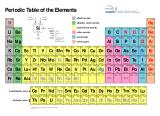Telecommunications is complicated. It’s getting more complicated as telephone companies become cable companies and vice versa. It’s things like this that only make it worse. Surely there must be simpler ways to help businesses save money? Why don’t you just lower the prices?
On the CeeDees 1986 self-titled album there’s song called France which goes, in part:
To see you would be thrilling, but I cannot take that chance.My friend Oliver heads to Paris this week — alas without our small family in tow, as was the original plan — and I’ll be whistling the chorus all week long. It seems somehow appropriate that my copy of the album is sitting on my mantle, still wrapped in its original cellophane. Someday I’ll open it.
What’s the time in France?
What’s the time in France?
Where in the hell is France?
There’s an interesting article by Ron Graham about Curtis’ influence on gardener Marjorie Harris.
Once you get over the whole swine-metaphor laced nature of radio station KPIG (and you do have to admire the extents to which they go in this direction; my favourite is the Lard Card), it’s probably the best radio station in the world. I’ve been listening solidly for about 5 days now, and I continue to be amazed with the breadth and quality of music they play. Especially of note is their Sunday morning live music program Please Stand By.
 Globe and Mail, March 15, 2001 — “The crash of a tractor trailer carrying a helium-cooled MRI machine closed the Yellowhead Highway near here for at least six hours yesterday. An RCMP spokesperson said the closing was necessary because helium used to keep the magnetic resonance imaging scanners supercooled was venting. The driver suffered minor injuries.”
Globe and Mail, March 15, 2001 — “The crash of a tractor trailer carrying a helium-cooled MRI machine closed the Yellowhead Highway near here for at least six hours yesterday. An RCMP spokesperson said the closing was necessary because helium used to keep the magnetic resonance imaging scanners supercooled was venting. The driver suffered minor injuries.”
National Post, March 15, 2001 — “The crash of a truck carrying a helium-cooled magnetic resolution imager closed the Yellowhead Highway near Jasper for at least six hours yesterday. An RCMP spokesman said the closure was necessary because the highly explosive helium was leaking. Experts were assessing the danger before attempting to clear the wreckage.”
Correction, National Post, March 17, 2001 — “Helium is not explosive. Incorrect information appeared in this story. The National Post regrets the errors.”
What is the defining characteristic of today’s CBC? The following are excerpts of CBC personality biographies:
![]()
“Hot Type host Evan Solomon continues to blaze new trails on an
already impressive career path that covers both print and
electronic media.” [see here]
![]()
“Engaging, curious, and sometimes a bit irreverent, Tod Maffin
brings a 20-year career in interactive radio to the CBC — a bit
unusual, considering he’s barely 30 years old.” [see here]
![]()
“At 33, [Avi] Lewis is already a 10-year veteran of on-air hosting and
producing in Canada and Britain.” [see here]
![]()
“Tessa Sproule is a rare breed of journalist, with eight years of
training and working experience in broadcast, print and online
journalism —all at the age of 25.” [see here]
Last month when I was in Boston, I had considerable opportunity to use my Island Tel digital cell phone. Based on my experiences there I sent an email to Island Tel upon my return, offering a report. Imagine my surprise today when I recieved an email of thanks, with notice that I’d receive a free month of service for my help. This is a good sign: Island Tel is starting to listen.
From the announcements page on eBay: Honesty Counters on Item Pages are currently unavailable. Honesty is working to correct this as quickly as possible..
When you’ve been using your cell phone to browse the web, one of the things that is constantly frustrating is the need to use the phone keypad to “type” URLs and other information into the phone. This is done using a special technique which involves pressing number keys an appropriate number of times to call up the required letter. For example, you press 2 once for A, twice for B and three times for C. One of the more frustrating things is that when you want to type in the same letter more than one (i.e. www), or letters which share the same key (i.e. fred), you have to pause slightly to wait for the phone to know you want to keep typing. I found tonight that one of the fringe benefits of having the last name Rukavina is that it’s possible to type this on a phone keypad without ever repeating the same key twice in a row.
Wow, I just found out that eToys is out of business. So much for the power of Somewhere Over the Rainbow.

 I am
I am